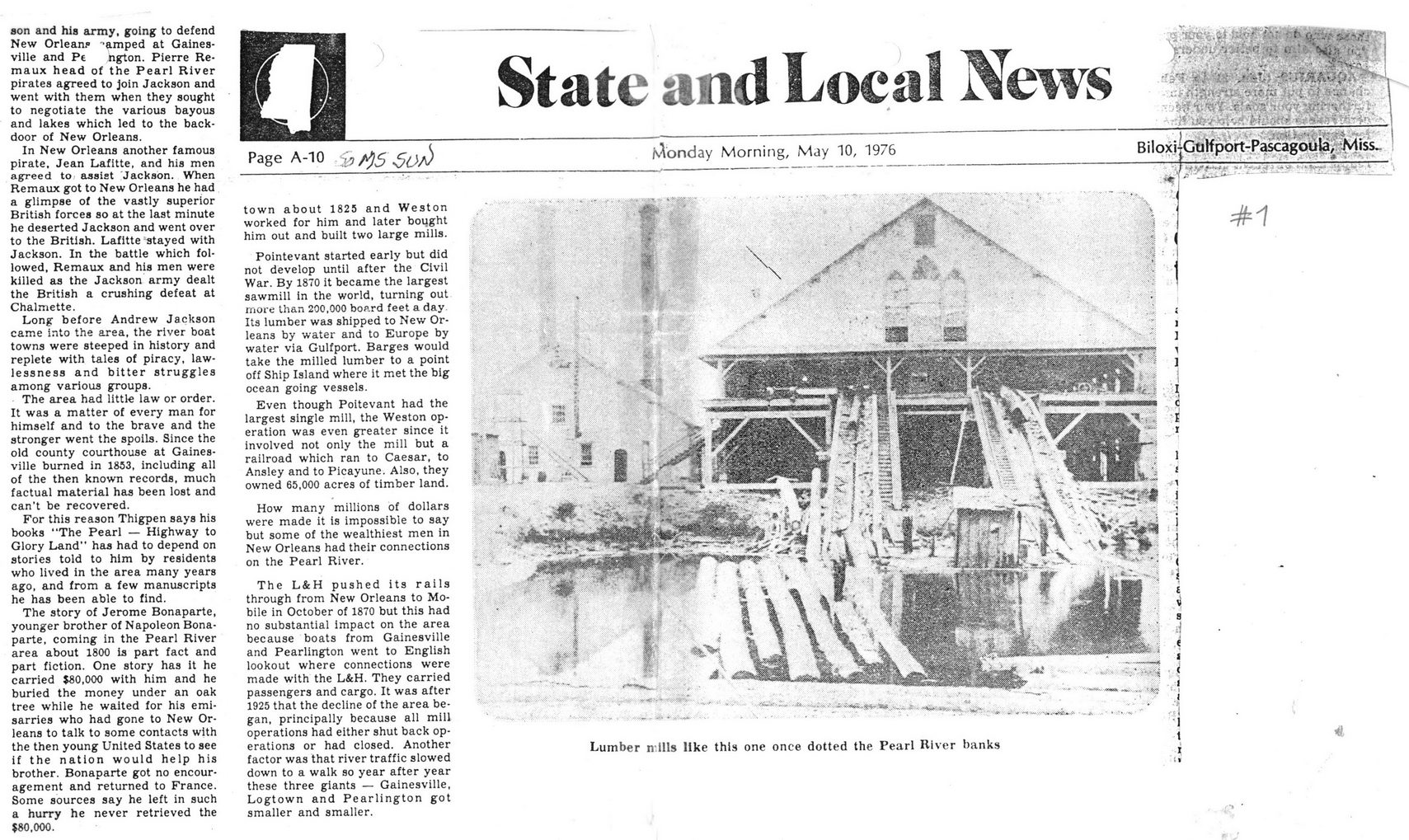This text was obtained via automated optical character recognition.
It has not been edited and may therefore contain several errors.
son and his army, going to defend New Orleans' -'amped at Gainesville and Pe ngton. Pierre Remaux head of the Pearl River pirates agreed to Join Jackson and went with them when they sought to negotiate the various bayous and lakes which led to the backdoor of New Orleans. In New Orleans another famous pirate. Jean Lafitte, and his men agreed to assist Jackson. When Remaux got to New Orleans he had a glimpse of the vastly superior British forces so at the last minute he deserted Jackson and went over to the British. Lafitte stayed with Jackson. In the battle which followed, Remaux and his men were killed as the Jackson army dealt the British a crushing defeat at Chalmette. Long before Andrew Jackson came into the area, the river boat towns were steeped in history and replete with tales of piracy, lawlessness and bitter struggles among various groups. The area had little law or order. It was a matter of every man for himself and to the brave and the stronger went the spoils. Since the old county courthouse at Gainesville burned in 1853, including all of the then known records, much factual material has been lost and can’t be recovered. For this reason Thigpen says his books “The Pearl — Highway to Glory Land" has had to depend on stories told to him by residents who lived in the area many years ago, and from a few manuscripts he has been able to find. The story of Jerome Bonaparte, younger brother of Napoleon Bonaparte, coming in the Pearl River area about 1800 is part fact and part fiction. One story has it he carried $80,000 with him and he buried the money under an oak tree while he waited for his emi-sarries who had gone to New Orleans to talk to some contacts with the then young United States to see if the nation would help his brother. Bonaparte got no encouragement and returned to France. Some sources say he left in such a hurry he never retrieved the $80,000. State and Local News .. t:'\ ' tx Sr’Sfr jE -“j' j n-,. £ Page A-10 Noonday Morning, May TO, 1976 hi v I ~i _______."afc-w• •>•>»iiisi'r > . .v.• B i 1 oxi|Gtilfport-Pa^goute k * -I town about 1825 and Weston worked for him and later bought him out and built two large mills. Pointevant started early but did not develop until after the Civil War. By 1870 it became the largest sawmill in the world, turning out more than 200,000 board feet a day Its lumber was shipped to New Orleans by water and to Europe by water via Gulfport. Barges would take the milled lumber to a point off Ship Island where it met the big ocean going vessels. Even though Poitevant had the largest single mill, the Weston operation was even greater since it involved not only the mill but a railroad which ran to Caesar, to Ansley and to Picayune. Also, they owned 65,000 acres of timber land. How many millions of dollars were made it is impossible to say but some of the wealthiest men in New Orleans had their connections on the Pearl River. The L&H pushed its rails through from New Orleans to Mobile in October of 1870 but this had no substantial impact on the area because boats from Gainesville and Pearlington went to English lookout where connections were made with the L&H. They carried passengers and cargo. It was after 1925 that the decline of the area began, principally because all mill operations had either shut back operations or had closed. Another factor was that river traffic slowed down to a walk so year after year these three giants — Gainesville, Logtown and Pearlington got smaller and smaller. j, I 5 8 Lumber n Ills like this one once dotted the Pearl River banks < ■« c V s A A i c i • i < ■i 1 1 i it *1 *•*

Logtown State and Local News - Pearlington, Logtown, Gainesville (59)